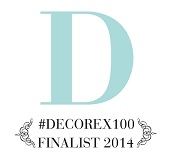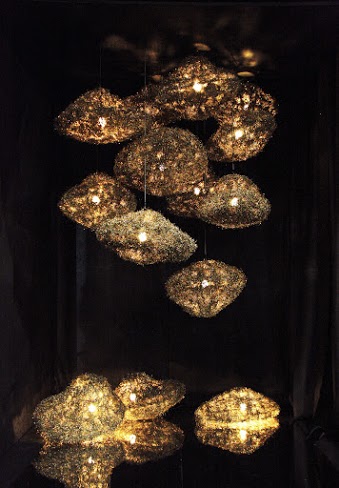ICYMI -- Part 2: 2016 Junior League of Boston Show House
 Thursday, June 30, 2016 at 3:00AM |
Thursday, June 30, 2016 at 3:00AM |  Laurie Gorelick Interiors
Laurie Gorelick Interiors Before we festoon ourselves in the Red, White and Blue in celebration of America's Independence Day, let's take a look at how some of the 2016 Junior League of Boston Show House designers used color to punctuate their designs. Color is one of my signature design elements, so it's no surprise that these rooms especially appealed to me.
"The Morning Room" was a particularly appropriate name for Kate McCusker Rosenberger's show house room given the bright, sunny colors that complemented her space.

Photo courtesy of Theodore and Company
Despite large-scale neutral upholstery, the space came alive with pops of yellow (note the ceiling plane), orange and hot pink. Kate perfectly balanced the saturated hot colors with cool neutrals, yet she made the room feel decidedly colorful.
In a similar palette was Kelly Rogers' Mother-in-Law Suite. Adding saturated colors to ceiling planes might just be the takeaway from these two spaces.
Lest you think that pinks and purples should only be relegated to bedrooms, take a look at Steven Favreau's Library. Steven cloaked the walls in drapery to disguise their disrepair, but the effect was to create a soft and undulating backdrop for art displays. Lilac trim, area rug, and upholstery fabrics are a departure from the dark wood and leather we come to expect in a library.
Bright orange was the jolt that Diana Frucci used to spice up her Family Media Room. In addition to being an interior designer, Diana and her husband own Furniture Consignment Galleries in Hanover and Plymouth, Massachusetts (and are soon opening a location in Natick) and used furniture from their stores to furnish this space.

Photo courtesy of Furniture Consignment Gallery
Last, but not least, is the color used by Vani Sayeed to bridge the challenging height of the kitchen she designed. Below is a "before" shot of the two-story space.
Two-story spaces pose challenging design problems of scale and proportion when the area, not the volume, of the space is small. With on-trend gray cabinetry, Vani tackled the soaring ceiling height by applying a vivid red faux-leather wallpaper above the cabinetry and using the additional height as gallery space.
Bare windows bathe the room in natural light and modulate the red walls. The large-scale sculptural light fixture also helps to consume the room's massive volume.














